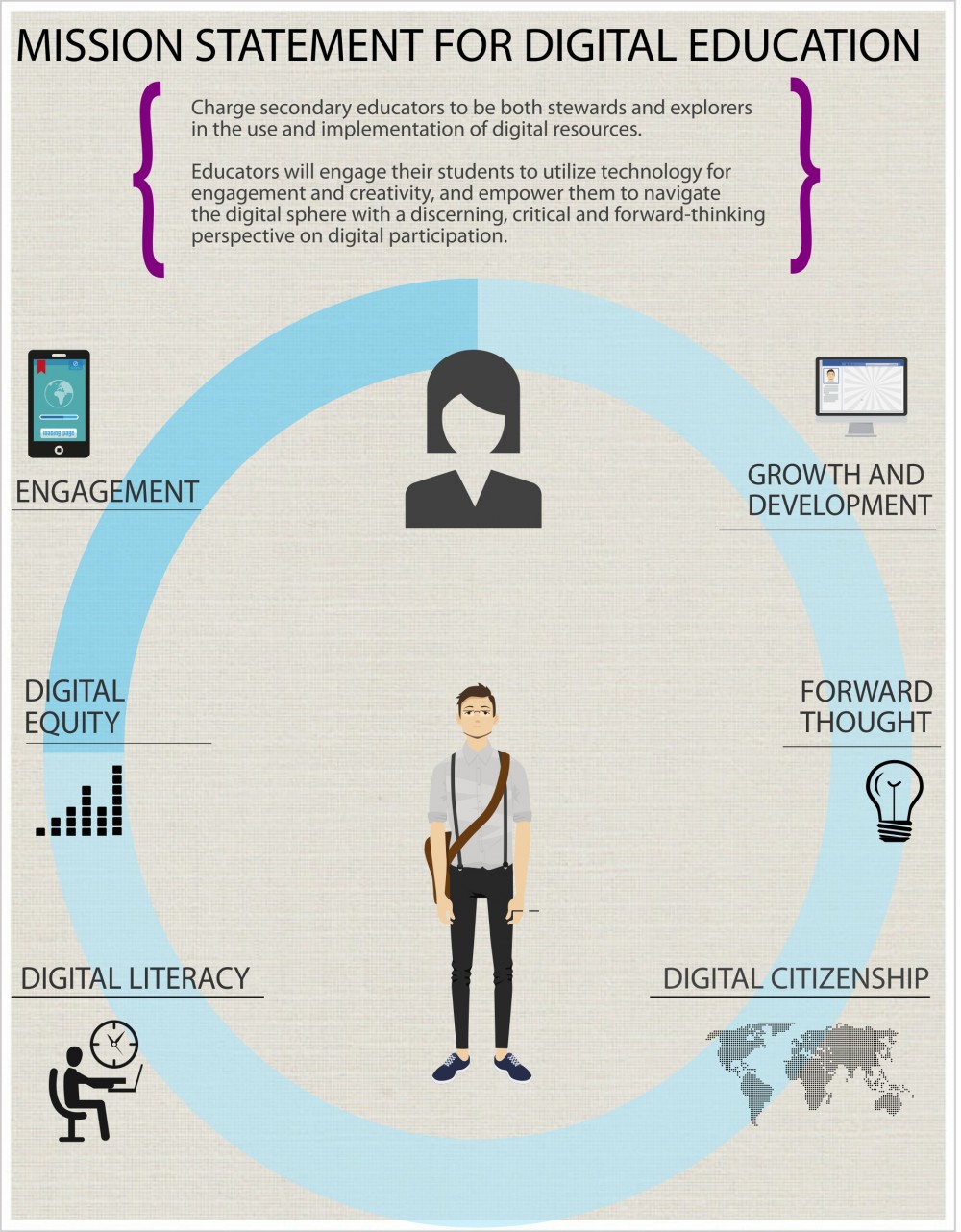<-Return to ISTE 1 Visionary Leadership
Contribute to the development, communication, and implementation of a shared vision for the comprehensive use of technology to support a digital-age education for all students.
Digital Readiness Project
My journey to develop and communicate a vision for technology use to support students has been a unique focus of mine for the past few years. I began this journey by taking a closer look at the state of my own school, chronicling the endeavor in my District Readiness Project: Study of a Public Middle School to discover how ready my school was to support the digital-age education for all students and to understand the current vision of the administration. I crafted interview questions for my administrator that focused on two driving questions: What is the school currently doing to prepare educators and students for digital citizenship issues faced as we teach and learn with technology? AND What does the administration see as the possible next steps for the future? I realized that my school appears to be ahead of the curve in many areas. The school is currently working towards the following five goals.
- Forward thinking
- Collaboration
- Digital literacy
- Network
- Strong leadership
Additionally, the school’s vision focuses on technology curriculum, educator preparation, access to technology via funding, and addressing major challenges. My final takeaways were that:
- System-wide cohesion of how technology integration among departments and content areas could be improved
- Digital interaction of students with larger communities is an area of potential growth
Education Technology Mission Statement
I used my experience with the Digital Readiness Project to consider my own Evolving Educational Technology Mission Statement. After careful thought and reflection, I crafted the following mission statement.
Charge secondary educators to be both stewards and explorers in the use and implementation of digital resources. Educators will engage their students to utilize technology for engagement and creativity, and empower them to navigate the digital sphere with a discerning, critical and forward-thinking perspective on digital participation.
This mission statement includes the following guiding principles.
- Engagement
- Forward-Thinking
- Growth and Development
- Digital Citizenship
- Digital Equity
As I consider this mission statement almost a year and a half later, I still think it adequately highlights important key features to consider when preparing students for the future.
Ideal Learning Environment
I continued the practice of developing and implementing a vision for the comprehensive use of technology by Exploring my Ideal Digital Learning Environment, leading to my investigation of How BYOD Fits Into An Ideal Learning Environment. Paying special attention to the Technological Pedagogical and Content Knowledge (TPACK) model, I considered the question: “What does a learning space that supports the development of a curious, persistent an adaptable student look like?” In an effort to implement Bring Your Own Device (BYOD) into my own classroom and create a structure that could be emulated, I worked with my administrators to initiate and engage in a pilot program. I shared responsible use agreements with my administrators, which were ultimately utilized by other teachers in my school, and worked to create a vision for professional learning that would support this implementation.
<-Return to ISTE 1 Visionary Leadership

